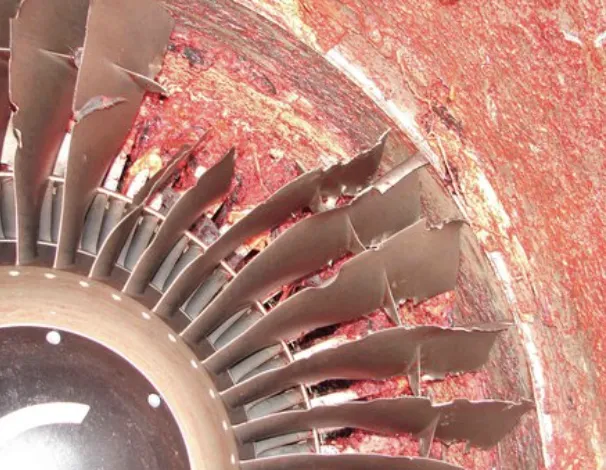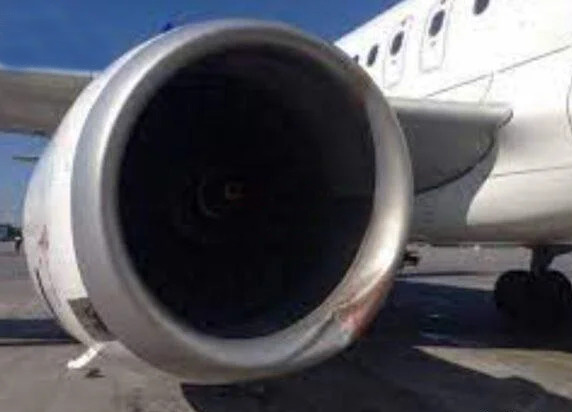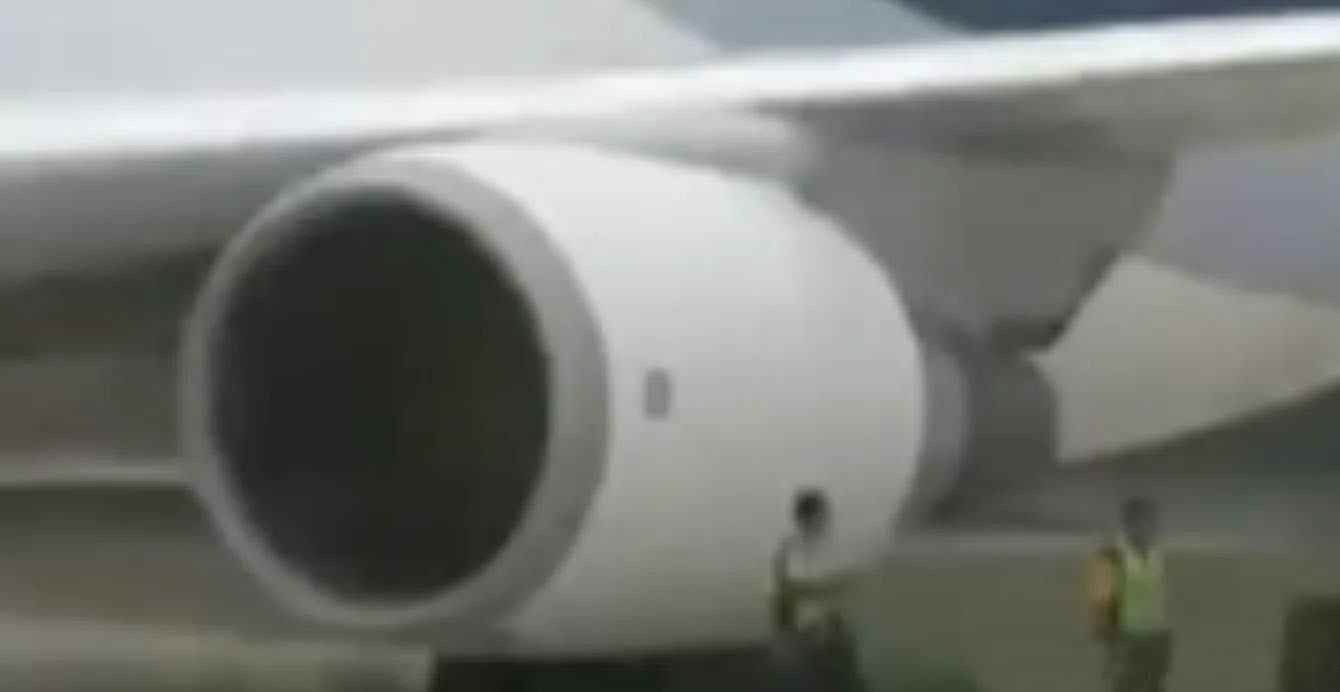Video Original Of The Air Astana 2004 and 2015 Incident Engine CCTV
Welcome to dafulbrightteachers.org, where we explore captivating moments in aviation history. In this episode, we’ll be examining the Air Astana 2004 and 2015 Incident. These incidents were not only transformative for the airline involved, but they also had a lasting impact on aviation safety standards. Join us as we delve into the details of the Air Astana 1388 incident engine. Don’t miss the original video footage of the Air Astana 2004 Incident Engine.

Nội dung bài viết
- 1 Important Points to Remember
- 2 Incident Overview
- 3 Reasons behind the Incident
- 4 Air Astana Responds
- 5 Implications of the Incident
- 6 More Significant Effects
- 7 Understanding the Incident in its Historical Context
- 8 Post-Incident Safety Measures and Recommendations
- 9 Analyzing the Video Footage
- 10 Understanding the Importance of Flight Details
- 11 Causes of the Incident
- 12 Report on Emergency Response and Casualties
- 13 Final thoughts
Important Points to Remember
On a fateful day in January 2004, an incident occurred involving an Air Astana Airbus A320, which was en route from Almaty to Nursultan. This unfortunate event was a result of a combination of factors, including technical malfunctions, adverse weather conditions, and human error. In the aftermath of the incident, significant efforts were made to enhance pilot training, improve aircraft maintenance procedures, and develop better crisis management strategies. It is important to note that this incident took place during a transformative era in the aviation industry, highlighting the need for continual safety improvements. Unfortunately, the repercussions of the incident were severe, as Air Astana faced substantial financial strain and a loss of trust from the public. Nonetheless, the lessons learned from this experience will serve as a constant reminder of the critical importance of safety in aviation.
Incident Overview
Flight of Destiny
Air Astana Flight 311, an Airbus A320, undertook a formidable test of its capabilities on a fateful day, January 29, 2004. As the aircraft embarked on its journey from Almaty to Nursultan, Kazakhstan, it confronted an overwhelming obstacle in the form of harsh winter conditions. Mother Nature’s wrath unleashed itself upon the flight, plunging it into a state of emergency.
Key Instances
Upon nearing Nursultan International Airport, the aircraft encountered unforeseen complications with its landing gear, leading to an unforeseen incident where it veered off the runway. It is a true testament to fortune that all 116 passengers and crew averted serious harm, although this occurrence has undoubtedly left a lasting mark on Air Astana’s aviation history.
Reasons behind the Incident
Technical Malfunction
The inquiry revealed a significant flaw in the plane’s guidance system, resulting in inaccurate measurements and a compromised ability to navigate.
The Role of Human Error
The crew members found themselves in a predicament of conflicting information as a result of malfunctioning navigation instruments, which ultimately led to errors in judgment when faced with high levels of stress. The causes of this incident can be attributed to the faulty instruments, creating a situation where the crew was unable to rely on accurate guidance. Despite their best efforts, the contradictory information left the crew members in a state of confusion, causing them to make decisions that may not have been optimal. It is crucial to understand the significance of accurate navigation instruments in high-pressure situations to prevent similar incidents from occurring in the future. The crew’s ability to navigate effectively relies heavily on the proper functioning of these instruments, as they provide essential guidance and help mitigate the risks associated with stressful scenarios.
Air Astana Responds
Improving Safety Measures
Following the unfortunate incidents, including the Air Astana 2004 and 2015 incident, the airline underwent a thorough reevaluation of its safety protocols. The company dedicated its efforts towards enhancing procedures related to weather conditions and tackling emergency landing scenarios. This comprehensive reassessment, prompted by incidents like the ones in 2004 and 2015, led to the implementation of innovative solutions and strategies to ensure the utmost safety and security of all passengers on board. The focus shifted towards utilizing cutting-edge technology, such as advanced weather monitoring systems and rigorous training programs for pilots and crew members. By elevating their safety measures, Air Astana aims to provide an unparalleled travel experience that instills confidence and tranquility in their valued customers.
Maintenance & Training
The airline also made significant changes to enhance its commitment to safety in aviation. These changes involved revamping their maintenance procedures and pilot training programs, displaying a strong emphasis on continuous improvement. By taking proactive measures, the company seeks to ensure the highest standards of safety and security for its passengers. Embracing innovation and implementing stricter protocols, they have gone above and beyond to create a safer travel experience. These initiatives exemplify their dedication to excellence and their unwavering pursuit of aviation safety.

Implications of the Incident
Impacts on Economy and Reputation
Air Astana was greatly affected by significant financial burdens in the aftermath of the incident, which were compounded by a notable erosion of public trust and passenger confidence. The airline found itself grappling with substantial economic challenges, while also dealing with the consequences of a decline in the faith that passengers placed in their ability to ensure their safety and security. This combination of financial strain and diminished confidence posed a formidable obstacle for Air Astana to overcome. However, their resilience and determination would be put to the test as they worked diligently to restore their reputation and rebuild the trust of the flying public.
Aviation Industry Safety
The event served as a stark reminder of the crucial need for rigorous safety standards and a continuous commitment to improving aviation technology and procedures. This incident highlighted the necessity for unwavering dedication in order to ensure the highest levels of safety and efficiency in the aviation industry. It emphasized the importance of constantly pushing the boundaries of innovation and refining our approaches to guarantee the well-being of all those who depend on air travel. By striving for excellence and embracing groundbreaking advancements, we can confidently navigate the skies with the utmost confidence and peace of mind.
More Significant Effects
Enhancing Safety Across the Industry
The incident served as a major catalyst for significant enhancements in safety throughout the aviation industry. Companies throughout the sector directed their focus towards improving aircraft maintenance, enhancing crew training programs, and implementing more rigorous safety protocols. These changes were implemented with a steadfast commitment towards ensuring the utmost safety for all passengers and crew members. The impact of these improvements was far-reaching, guaranteeing that future flight experiences would be even safer and more secure.
Lessons from Crisis
The incident serves as a compelling case study in effectively managing crises, emphasizing the crucial role of response and communication in mitigating the consequences of such events. This event showcases the power of prompt and efficient action, as well as the significance of clear and transparent communication, in minimizing the impact caused by unforeseen circumstances. It stands as a testament to the importance of strategic planning and crisis management, demonstrating how a well-executed response can significantly influence the outcome of a crisis.
Understanding the Incident in its Historical Context
Revolutionary Period in Aviation
During the era when the Air Astana 2004 Incident occurred, the aviation industry witnessed remarkable changes. At that time, aviation technology was advancing at a rapid pace, bringing forth groundbreaking innovations. Simultaneously, the focus on safety measures had reached new heights, instigating a wave of stringent protocols and procedures to ensure the well-being of passengers and crew alike. It was a transformative period, where the skies were becoming safer and more technologically sophisticated with each passing day.

Airline Growth in Response to Regulatory Shifts
Emerging shifts in regulations were revolutionizing aviation norms, focusing on enhancing the efficiency of operational procedures. Alongside these developments, Air Astana, a carrier that has weathered challenges, including the air astana 2004 and 2015 incidents, was experiencing rapid expansion, bolstering its network of routes and demonstrating an unwavering dedication to ensuring the utmost safety. The ever-changing landscape of the industry presented opportunities for innovative approaches, and Air Astana was quick to seize them, navigating new horizons while upholding their commitment to excellence.
Post-Incident Safety Measures and Recommendations
The Latest Safety Innovations
As a result of this incident, the aviation industry underwent significant advancements in ensuring safety. These measures encompassed enhancements in the realm of aircraft maintenance, crew training, and the overall implementation of safety protocols. These improvements served as a catalyst for positive change throughout the industry, fostering a proactive mindset towards guaranteeing the well-being of passengers and crew members. It prompted a new era of accountability and dedication to excellence, as aviation professionals continuously sought innovative ways to enhance safety standards. By prioritizing continuous improvement and fostering a culture of thoroughness, the industry aimed to instill a sense of confidence and trust in air travel for all those who embark on their journeys.
Adapting Operations: Air Astana
After conducting a thorough evaluation of its operational procedures, Air Astana made significant adjustments to enhance the safety of both passengers and crew members. This comprehensive review involved implementing innovative measures to ensure a secure and comfortable travel experience. By prioritizing safety as a top priority, Air Astana has successfully revamped its practices, instilling a sense of confidence and peace of mind among travelers. These improvements have not only elevated the level of security on board but have also contributed to a seamless and enjoyable journey for all.
Analyzing the Video Footage
Understanding Content and Context
The captured footage of the incident delivers invaluable insights into the sequence of events, providing a vivid portrayal of the aircraft, its engine, and the crew’s dynamic actions. Revealing the challenges encountered in real-time, this visual account allows us to delve into the essence of the situation, to truly grasp the complexities and obstacles faced.
Engine-Related Aspects Analysis
The video footage offers insight into the behavior of the engine, the reaction of the crew, and the surrounding environmental conditions. By presenting a comprehensive timeline of events and contributing factors, it provides a thorough understanding of the situation.
Understanding the Importance of Flight Details
Flight 311: An Essential Connection
Flight 311 played a crucial role in Air Astana’s extensive network, facilitating connections between vital destinations. The incident had a deep and far-reaching impact on the airline’s operations and its standing within the industry. It brought about significant changes in how the airline operated and how it was perceived by others.
Aviation Authorities’ Responsibility
Following a critical incident, the aviation authorities assumed a crucial role in delving into the intricacies and examining the circumstances surrounding the event. Their extensive analysis and insightful recommendations have had a lasting impact on safety standards throughout the industry. These findings have become a driving force, shaping the way aviation professionals perceive and address potential risks. The influence of their comprehensive investigations reverberates throughout the sector, ensuring a commitment to continuous improvement and the utmost emphasis on safety measures.
Causes of the Incident
Understanding the Technical and Human Aspects
The occurrence of technical glitches, encompassing troubles with the navigation system, wielded a pivotal influence. Furthermore, inclement weather conditions and errors made by the pilot also exerted substantial impact.
Issues with Maintenance
Insufficient maintenance protocols have arisen as a significant concern, underscoring the crucial role that regular inspections and monitoring play in guaranteeing aviation safety. These procedures are indispensable in identifying and rectifying potential issues before they have the chance to compromise the security of aircraft and its passengers. By adhering to rigorous maintenance routines, aviation experts are proactive rather than reactive, preventing accidents and fostering an environment of trust and confidence among travelers. Just as a vigilant caretaker meticulously tends to the needs of a prized garden, so too must aviation professionals diligently maintain and nurture the intricate systems that uphold the safety and smooth operation of the aviation industry.
Report on Emergency Response and Casualties
Prompt and Thorough Reaction
After the event unfolded, the swift response of emergency personnel was instrumental in mitigating the consequences and preserving the lives of those affected.

Human Toll of Tragedy
The casualty report brought forth a heartbreaking account of lives lost and injuries suffered, compellingly highlighting the immense toll this incident took on humanity. Each entry painted a somber picture of the lives extinguished too soon and the physical and emotional scars borne by the survivors. This distressing revelation serves as a stark reminder of the deep impact this event had on those involved and the lasting effects it will have on their lives.
Final thoughts
The Air Astana 2004 and 2015 incident holds a significant position in the chronicles of aviation, symbolizing the utmost importance of safety measures, meticulous maintenance, and effective crisis management. This event became a defining moment for Air Astana, prompting them to make substantial improvements in their safety protocols and operational practices. Its implications are profound, serving as a poignant reminder of the relentless pursuit of safety that remains at the core of aviation. At dafulbrightteachers.org, we strive to shed light on such instances, emphasizing the invaluable lessons learned and the continued endeavor for a safer aviation industry that benefits all.
EN -